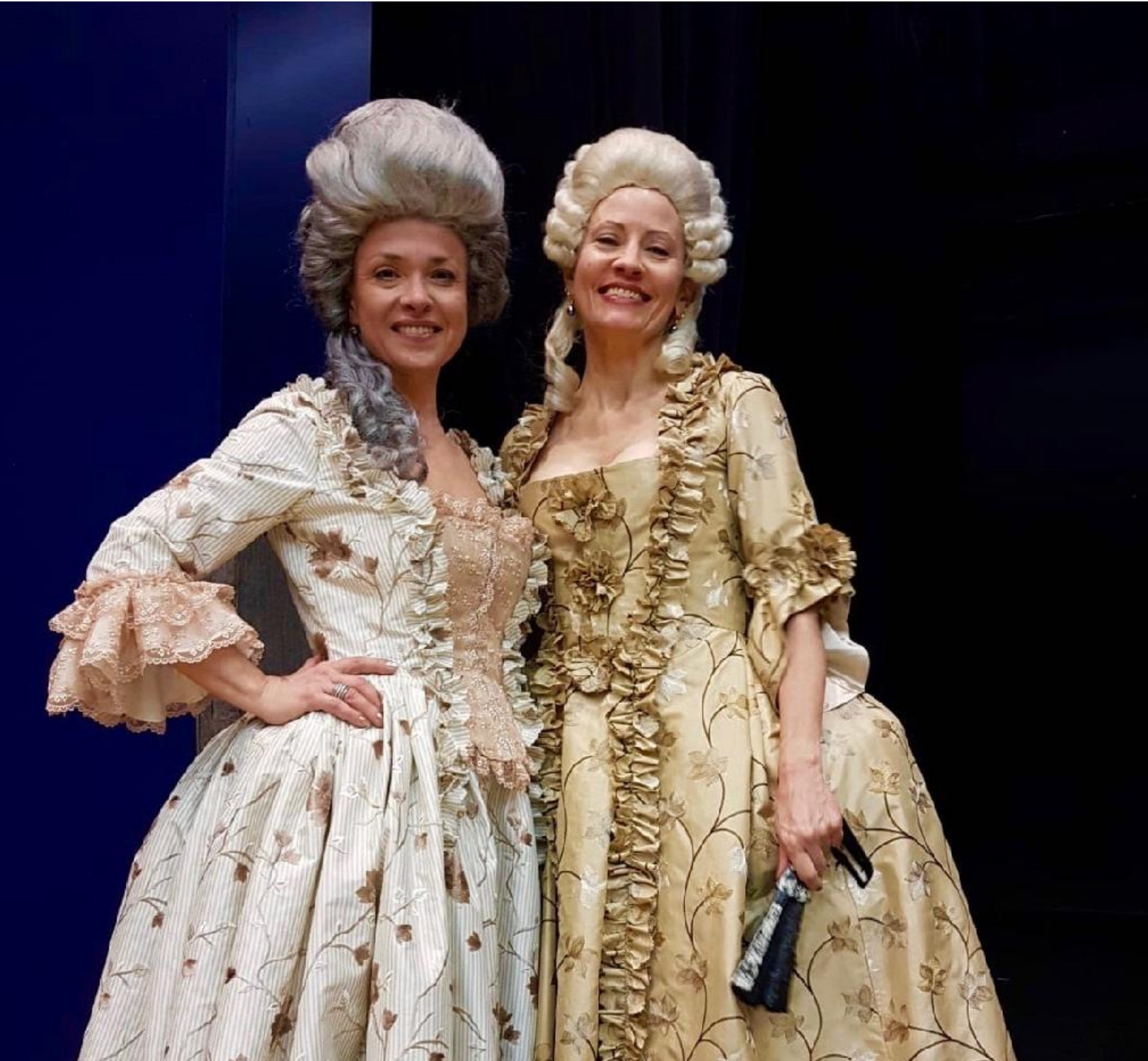WHEN COSTUMES TAKE CENTRE STAGE BY MANUELA ISAILA
Sets, lights, costumes, hairdos, sounds, all of these make up such an integral part of any production, we rarely set a spotlight on them. But when the play is Les Liaisons Dangereuses and when the artist behind the costumes is Liz Comstock- Smith, they take centre stage, and become a character in their own right. To start with, dressing for court in 18th century France was hard enough, dressing millenials in 18th century clothes is a serious challenge and a veritable odyssey: from researching styles, sourcing the materials, and choosing the right colours, to sewing fitting and deciding on details – all done by Liz and Geraldine Stevens. According to Liz’s research, both men’s and women’s highly decorative, peacocky fashions turned to a more restrained “a l’anglaise” style right about the 1780’s, and the “grand tenue” at the court of Versailles was replaced by the simpler “redingote” (“riding coat”). The so-called “chemise de la reine” – as that created for Cecile’s dress –
was in fact so simple it was seen as shocking. It is often mistakenly thought that this simplicity of dress came in with the Revolution of 1789, but it was, in fact,
Marie-Antoinette herself on one hand, and the English Romantic movement on the other, who had introduced it ten years earlier, when the play was written.

BACKSTAGE WITH COSTUMES
The period decoration for formal dress for women – as in the first and last scenes of Les Liaisons Dangereuses – was still extreme, which is amply reflected in the richness of detail the costumes exhibit: rioting ribbons, and laces and plumes, and ruffles, all fighting for our attention, were found by Liz by rummaging through her large collection amassed along the years. Hemlines, on the other hand, definitely went daringly shorter in the 1780’s, showing spots of ankle above sexily-laced shoes or booties – another challenge involving both aesthetics and comfort, which was overcome for this production by the period expertise of Geraldine.

Liz has always believed that the emotional movement of a play is more important than individual characters; in this case, “Valmont and Merteuil are central to the play”, it all revolves around them, but, in terms of costume, “they are as much a part of the decor as any other character, including servants”. And the greatest challenge for this “decor”? “A lot of very fast changes and – it sounds silly to complain about this – but these costumes are huge! Moving 6-8 metres of material through a sewing machine is no joke!”
